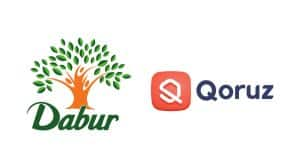In the fast-paced world of social media, brands can either skyrocket to fame or crash into the troll zone. Mastering the dos and don’ts of social media marketing is key to staying afloat and thriving. Saijal Jain, manager -media buyer, Adbuffs talks to BrandWagon Online about the essential strategies and common pitfalls of social media marketing.
What are the most common mistakes brands make on social media, and how can they be avoided to enhance engagement and brand loyalty?
One of the biggest mistakes brands make on social media is creating overly promotional content. Users primarily visit platforms like Instagram to be entertained, learn new things, or network—not to be inundated with sales pitches. To avoid this, brands should focus on community-led content that provides real value. This includes showcasing trends, offering helpful tips, and creating content that makes followers’ lives easier. It’s crucial that this content is also entertaining; people don’t want highly edited, polished posts. Instead, they prefer content that feels natural and native to the platform.


GenSxty Tribe to launch tech-enabled platform ‘GenS’ for over 60 age community

Dabur collaborates with Qoruz for influencer marketing strategy

Rise of the ‘monk-fluencers’
Another common mistake is the lack of consistency in posting. Irregular posting schedules can confuse followers and decrease engagement. To avoid this, brands should develop a content calendar to ensure a steady stream of posts, maintaining a constant presence that keeps the audience engaged.
Additionally, many brands treat social media as a one-way communication channel, where they post content and wait for followers to engage. This approach misses the opportunity to build a vibrant community. Brands should actively engage with their audience by responding to comments and messages and interacting with other brands and pages that their target audience follows. This helps increase visibility and fosters a sense of community.
Lastly, the absence of a recognisable human face can make a brand seem impersonal. People are more inclined to engage with people rather than faceless entities. Brands should introduce the people behind the scenes, such as founders or team members, in their content. Founder-led social media, where the founder shares insights and participates actively, can significantly boost engagement and loyalty. This personal touch makes the brand more relatable and trustworthy.
By addressing these common mistakes, brands can enhance their social media presence, foster stronger engagement, and build a loyal community.
How can marketers tailor their social media strategies to different platforms (Instagram, LinkedIn, YouTube) to ensure they are making the most of each platform’s unique features and audience?
To maximise the effectiveness of social media strategies, marketers need to tailor their approaches to fit the unique features and audiences of each platform. Here’s how to optimise strategies for Instagram, LinkedIn, and YouTube:
Instagram is a visual-centric platform where storytelling through images and videos is key. Use high-quality images and engaging videos to capture attention. Instagram Stories and Reels are perfect for sharing behind-the-scenes content, quick updates, and engaging short-form videos. Keep it informal and fun to watch.
LinkedIn is a professional network best suited for B2B marketing, industry insights, and professional content. Share industry news, thought leadership articles, case studies, and company updates. Content should be insightful and provide value to professionals in your field. Encourage employees to share company content and their professional insights. This can amplify reach and enhance the brand’s credibility.
YouTube is a video-centric platform where long-form content can thrive. It’s ideal for educational and entertaining videos. Create tutorials, how-to videos, product reviews, and behind-the-scenes content. Videos should be informative, and engaging, and provide value to the viewer. Optimise video titles, descriptions, and tags with relevant keywords to improve searchability. Include clear, enticing thumbnails and compelling video intros to attract viewers.
In the context of algorithm changes on platforms like Facebook and Instagram, what strategies would you recommend to maintain or increase organic reach?
Use storytelling techniques to make your content more engaging and relatable. Personal stories or case studies can captivate your audience’s attention and prompt interaction. Platforms often prioritise new features in their algorithms. Regularly use Instagram Stories and Reels to increase visibility and engagement. These formats are designed to be quick, engaging, and can reach a broader audience. Encourage your followers to create content related to your brand. Sharing user-generated content not only provides social proof but also increases engagement and reach. Partner with influencers who resonate with your brand and audience. Influencers can amplify your reach and introduce your brand to new followers. Collaborate with complementary brands or pages to cross-promote content. This can help you tap into new audiences and increase your reach. And do not be afraid to jump on trending content, music, memes etc.
By implementing these strategies, you can navigate algorithm changes on platforms like Facebook and Instagram more effectively, maintaining or even increasing your organic reach. The key is to stay adaptable, prioritise high-quality content, and actively engage with your audience.
What role does data analytics play in shaping successful social media campaigns, and how can marketers use data to optimise their strategies?
Data analytics is integral to the success of social media campaigns, providing insights that drive strategic decisions, optimise content, and enhance engagement. When marketers have access to customer data, they can precisely tailor their efforts to meet audience needs and preferences, ensuring that content resonates and performs well.
Understanding Audience Behavior
Analytics provides deep insights into audience demographics, preferences, and behaviours. This understanding is essential for creating content that appeals to your target audience.
- Audience Demographics: Data analytics helps identify key demographics such as age, gender, location, and interests, allowing for the creation of targeted and relevant content.
- Behavioural Insights: Understanding what your audience is looking for on social media helps in crafting content that meets their needs. Insights into when your audience is most active, what type of content they engage with, and their social media habits can optimise posting schedules and content strategies.
Data analytics allows for more precise targeting and personalisation, which can significantly improve the effectiveness of social media campaigns.
- Custom Audiences: Create custom audiences based on past interactions and behaviours to target more effectively.
- Personalised Content: Use data to personalise content and messaging, making it more relevant to individual audience segments.
Predictive analytics uses historical data to forecast future trends and behaviours, enabling proactive strategy adjustments.
- Trend Identification: Predict upcoming trends based on historical data and adjust your content strategy to stay ahead of the curve.
- Resource Allocation: Forecast which campaigns are likely to yield the best results and allocate resources accordingly.
Using Data to Optimise Social Media Strategies
Set Clear Goals: Define specific, measurable goals for your social media campaigns. Clear objectives help in tracking progress and measuring success.
Monitor Key Metrics: Regularly analyse key metrics such as engagement rates, reach, click-through rates, and conversions. Understanding these metrics helps in identifying strengths and weaknesses in your strategy.
Refine Audience Targeting: Use data to continually refine your audience targeting. Update your audience profiles based on the latest insights to ensure your content reaches the most relevant users.
Adjust Content Strategy: Based on performance data, adjust your content strategy to focus on what works best. Experiment with different content types and formats to see what drives the most engagement.
Utilise Advanced Analytics Tools: Invest in advanced analytics tools that provide deeper insights and more sophisticated data analysis. Tools like Google Analytics, Facebook Insights, and third-party analytics platforms can offer comprehensive data.
Stay Agile and Adaptable: Be prepared to adapt your strategy based on data insights. Social media trends and algorithms change frequently, and an agile approach allows you to stay ahead of the competition.
Follow us on Twitter, Instagram, LinkedIn, Facebook



